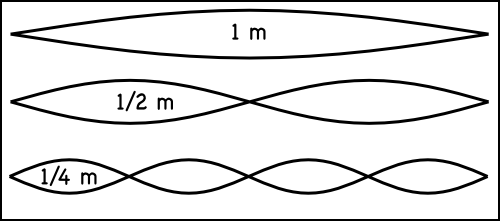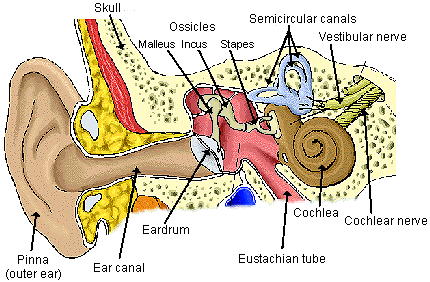Physical Science
Sound Ch 16
Review of roman numerals
3 and 4
1. If an auditorium is experiencing too much
reflection, what might the owner choose to do?
How would this help? The owner might want to add padding to the walls to absorb sound or add angles so that the sound reflects differently.
2. What
does this image represent in a sound wave? It is three of the same note begin played in different octaves.
3. What
is the difference between noise and music? Noises are random and music uses pitches whose waves are mathematically related.
4. Explain in a sentence how musical sound waves
are able to be interpreted as music in
our brain. The outer ear funnel the sound wave to the eardrum. The movement of the drum triggers 3 small bones to move which transfers the vibration to the cochlea. The cochlea is full of fluid and 10,000 hairs. These hairs are connected to nerve cells which turn the movement into electrical impulses which are sent to the brain.
5. Draw
an ear and label the ear drum, the 3 small bones (called Ossicles in the picture), and the cochlea.
6. Name
2 causes of hearing loss. answers may vary, two possibilities are sudden loud noises like a lightening strike or sustained moderately loud sounds like a blender
7. What
are two changes to a normal ear that are common and cause hearing loss? a ruptured eardrum and dead hairs in the cochlea due to aging
8. Explain
what a hearing aid does (be specific and use information from our notes). A hearing aid can either increase the amplitude of all frequencies or it can target only certain frequencies.
9. Name
one use of sound waves that is not for music or noise. answer may vary, some possibilities are sonar and ultrasound


No comments:
Post a Comment
Thank you for commenting on our science class blog :)
Mrs. Tiday